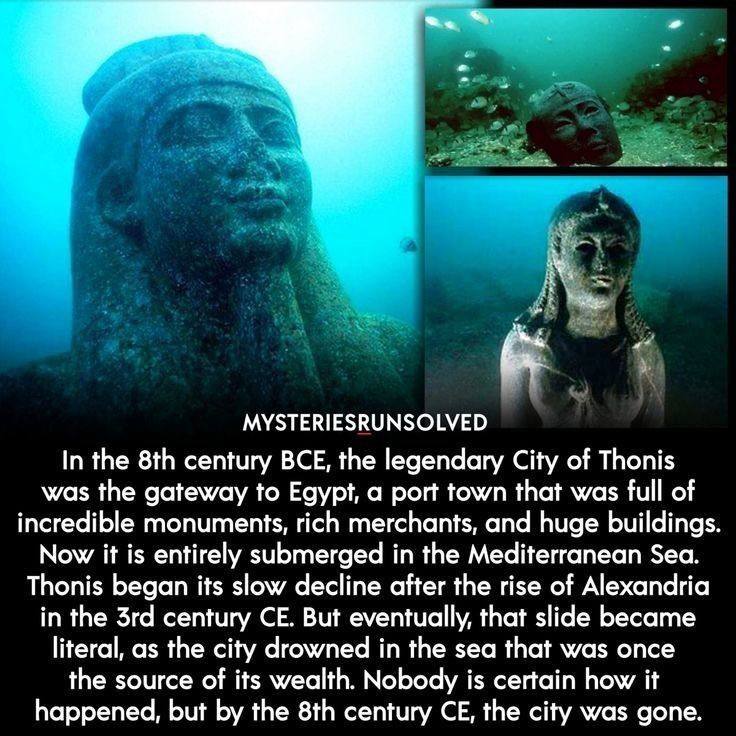
In the 8th century BCE, the legendary City of Thonis was the gateway to Egypt, a port town that was full of incredible monuments, rich merchants, and huge buildings.
Now it is entirely submerged in the Mediterranean Sea.
Thonis began its slow decline after the rise of Alexandria in the 3rd century CE. But eventually, that slide became literal, as the city drowned in the sea that was once the source of its wealth. Nobody is certain how it happened, but by the 8th century CE, the city was gone.
Thonis was not just a city—it was a thriving hub of commerce, culture, and ancient power. Known to the Greeks as Heracleion, it was a bustling metropolis where merchants from across the Mediterranean converged to trade spices, silks, precious metals, and exotic goods. Towering temples dedicated to the gods, vast marketplaces filled with colorful wares, and majestic statues lining the harbors were all part of its grandeur.
The city’s strategic location at the mouth of the Nile made it the gateway to Egypt. Control over Thonis meant control over the trade routes into one of the most prosperous civilizations of the ancient world. But this prosperity came with a hidden vulnerability.
Thonis was built on a series of small islands, connected by a complex network of canals and bridges. This made the city a marvel of ancient engineering, but also left it at the mercy of natural forces. The unstable, waterlogged ground on which it stood, combined with rising sea levels, earthquakes, and possibly tsunamis, began to take a toll.
By the 3rd century CE, Alexandria had risen as the new center of trade and culture in Egypt, drawing commerce and influence away from Thonis. As the city’s wealth and importance declined, so did its ability to maintain its complex infrastructure.
Eventually, the slow decline turned into a catastrophe. The ground beneath Thonis began to subside, sinking into the sea. One by one, its grand temples, marketplaces, and harbors were claimed by the waves. The city that had once been the gateway to Egypt disappeared beneath the Mediterranean, leaving only scattered ruins and the faint whisper of a legend.
It was not until the 21st century that modern archaeologists began to uncover the sunken ruins of Thonis. French underwater archaeologist Franck Goddio led the team that rediscovered the city in 2000, bringing to light its grand statues, gold coins, stone slabs inscribed with ancient texts, and the remains of its once-thriving harbors.
The discovery of Thonis has revealed a wealth of information about ancient Egyptian and Greek trade, religion, and daily life. But it has also raised new questions. What caused the city to sink so suddenly? Was it a slow, natural process, or a sudden cataclysm? Were its people able to escape, or did they perish with their city?
This essay will explore the history of Thonis, its rise as a prosperous port city, the reasons for its decline, and the modern archaeological efforts that have brought its story back to life. It will delve into the myths, mysteries, and enduring legacy of a city that was once the gateway to Egypt, but now lies hidden beneath the waves.


